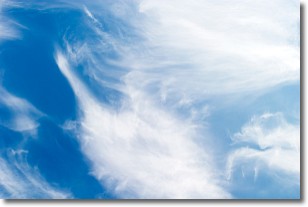Weather Alert in Iowa
Flood Watch issued July 31 at 5:02AM CDT until August 3 at 7:00AM CDT by NWS Des Moines IA
AREAS AFFECTED: Humboldt; Webster; Hamilton
DESCRIPTION: ...The Flood Watch continues for the following rivers in Iowa... Des Moines River at Fort Dodge affecting Hamilton, Webster and Humboldt Counties. * WHAT...Flooding is possible. * WHERE...The Des Moines River at Fort Dodge, or from confluence of the West and East Fork Des Moines River to the Boone River. * WHEN...From Friday afternoon to Sunday morning. * IMPACTS...At 11.0 feet, Water affects lowland areas near the river and threatens residences along the river in Fort Dodge. * ADDITIONAL DETAILS... - At 4:00 AM CDT Thursday the stage was 9.0 feet. - Forecast...Flood stage may be reached early tomorrow afternoon. - Flood stage is 10.5 feet.
INSTRUCTION: For the latest waterway observations and forecasts refer to weather.gov/desmoines/water. River forecasts include observed precipitation plus forecast precipitation over the next 24 hours.
Want more detail? Get the Complete 7 Day and Night Detailed Forecast!
Current U.S. National Radar--Current
The Current National Weather Radar is shown below with a UTC Time (subtract 5 hours from UTC to get Eastern Time).

National Weather Forecast--Current
The Current National Weather Forecast and National Weather Map are shown below.

National Weather Forecast for Tomorrow
Tomorrow National Weather Forecast and Tomorrow National Weather Map are show below.

North America Water Vapor (Moisture)
This map shows recent moisture content over North America. Bright and colored areas show high moisture (ie, clouds); brown indicates very little moisture present; black indicates no moisture.

Weather Topic: What are Wall Clouds?
Home - Education - Cloud Types - Wall Clouds
 Next Topic: Altocumulus Clouds
Next Topic: Altocumulus Clouds
A wall cloud forms underneath the base of a cumulonimbus cloud,
and can be a hotbed for deadly tornadoes.
Wall clouds are formed by air flowing into the cumulonimbus clouds, which can
result in the wall cloud descending from the base of the cumulonimbus cloud, or
rising fractus clouds which join to the base of the storm cloud as the wall cloud
takes shape.
Wall clouds can be very large, and in the Northern Hemisphere they generally
form at the southern edge of cumulonimbus clouds.
Next Topic: Altocumulus Clouds
Weather Topic: What are Altostratus Clouds?
Home - Education - Cloud Types - Altostratus Clouds
 Next Topic: Cirrocumulus Clouds
Next Topic: Cirrocumulus Clouds
Altostratus clouds form at mid to high-level altitudes
(between 2 and 7 km) and are created by a warm, stable air mass which causes
water vapor
to condense as it rise through the atmosphere. Usually altostratus clouds are
featureless sheets characterized by a uniform color.
In some cases, wind punching through the cloud formation may give it a waved
appearance, called altostratus undulatus. Altostratus clouds
are commonly seen with other cloud formations accompanying them.
Next Topic: Cirrocumulus Clouds
Current conditions powered by WeatherAPI.com




